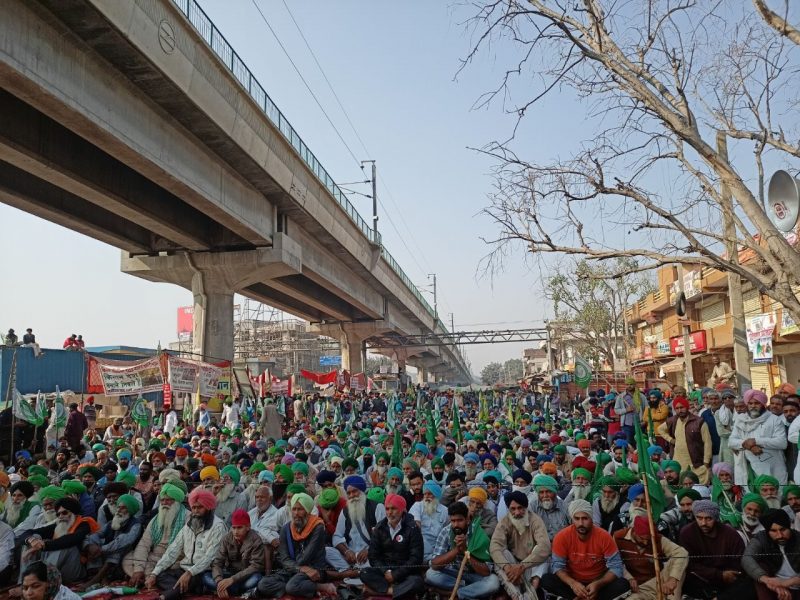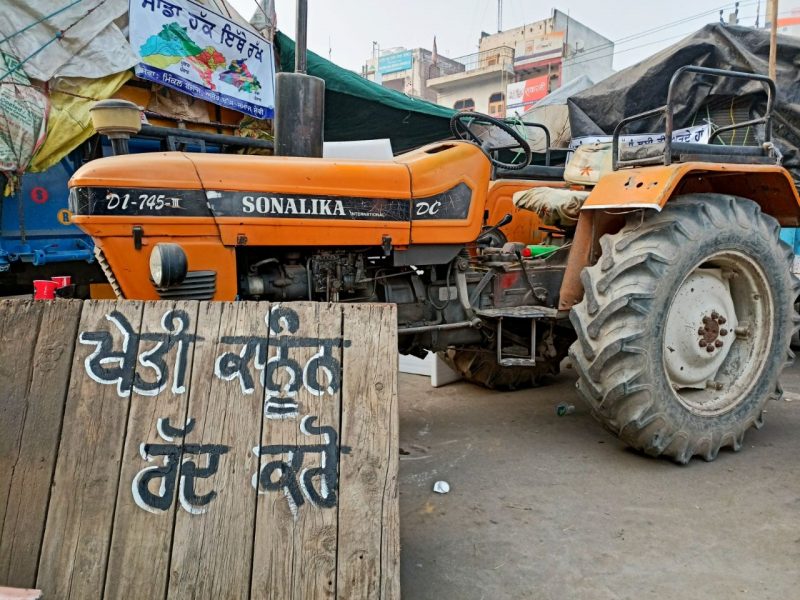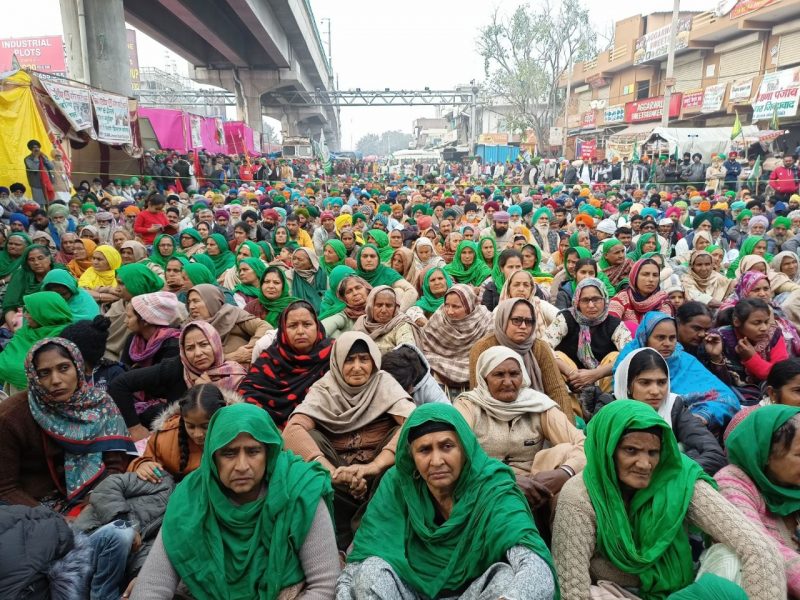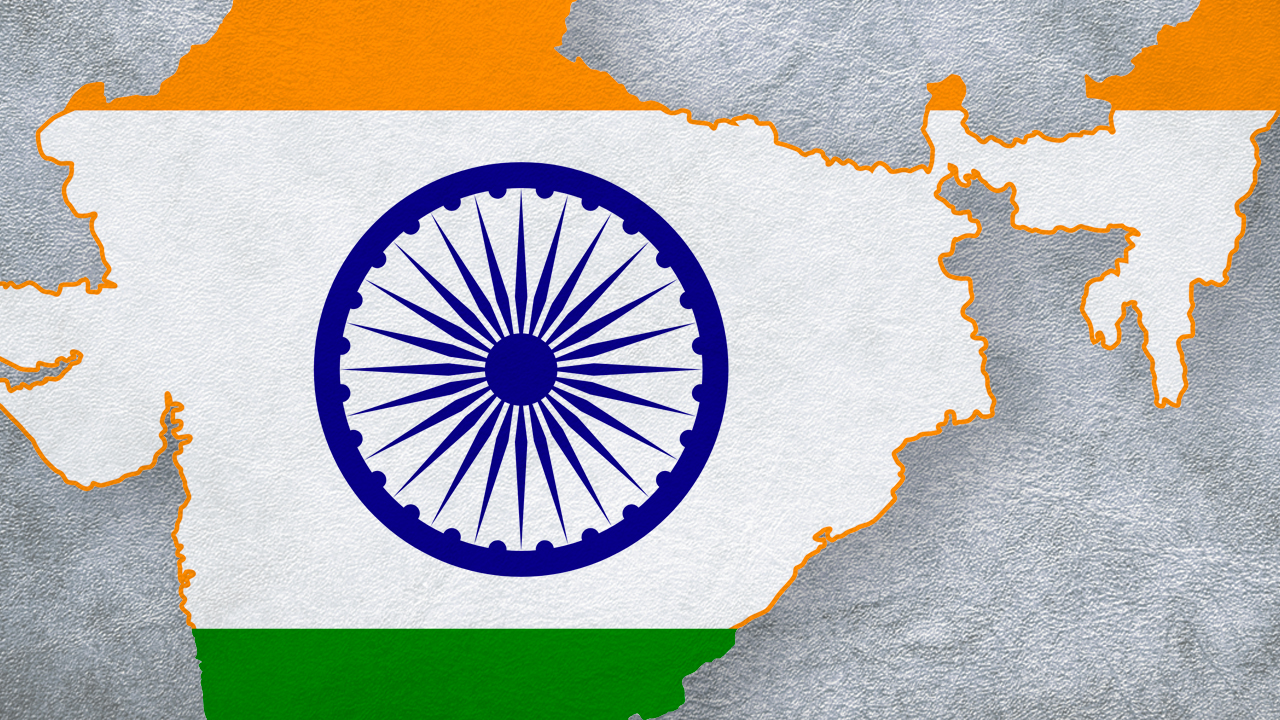By Navkiran Natt / India
The ongoing farmers’ protest in India is being hailed as the biggest ever people’s protest in the history of the world. The protest has attracted attention from all over the world and rekindled the hope for a mass movement to bring about progressive change in India. Over the last decade, Indians have witnessed many mass movements across the country, but none of this scale.
The farmers movement began in the state of Punjab (an agrarian state in the northwest of the national capital of Delhi) in June, 2020 when the Modi led BJP government unconstitutionally passed three unpopular farm laws using the COVID-19 pandemic as a pretext. After protesting for 4 to 5 months, the protestors felt they were not being heard, so on November 26, 2020 farmers from Punjab and adjoining state of Haryana started marching towards the national capital of Delhi, many in their tractor trolleys. They were met with brute force at the borders of Haryana and Delhi but they stayed firm in their determination to peacefully protest and blocked the national highways approaching the national capital. On November 26 an all India workers’ strike took place, and turned out to be a huge success. This day marked the historic unity of workers-peasants duo action against the regressive labour law changes and three farm bills.
The region of Punjab and Haryana was once the center of the Green revolution (1960s – a period when agriculture was dealt on industrial scale to increase the agrarian production to meet country’s need) but later fell into distress due to the long term consequences of the green revolution and government’s neoliberal policies and poor governance. Yet, agriculture remains the biggest employer, accommodating almost 60% of the labour force and accounting for 18% of India’s GDP. The agrarian crisis in India has deepened over time leading to a long era of farmer suicides in different states of the country. The pandemic made things worse, hitting the poorest of the poor, particularly agricultural laborers and small farmers. The proposed farm laws then threatened whatever semblance of survival that agriculture had been providing these groups.
Against this background, the farmers have hit the roads in protest. The movement may seem sudden to some, but the momentum has been building up with similar but smaller scale protests over the last few years; 2017 in Rajasthan, 2018 in Madhya Pradesh and Tamil Nadu, and 2019 in Maharashtra. This time, the protest started in Punjab and spread across the country. At the moment the farmers of Punjab, Haryana, Uttarakhand, Uttar Pradesh, Bihar, Rajasthan, Gujarat, Madhya Pradesh, and Maharashtra are protesting in huge numbers; other states are gearing up to join in as well.
The three farm laws promulgated by the central government are as follows:
The Essential Commodities (Amendment) Ordinance 2020 lifts restrictions on hoarding essential commodities like cereals, pulses, potatoes, onions, edible oilseeds, and oils.
The Farmers Produce Trade and Commerce (Promotion and Facilitation) Ordinance 2020 lifts the restrictions on trading farmers’ produce beyond the physical premises of Agriculture Produce Market Committee markets (mandis in local language). It prohibits State governments from levying any market fee, cess or levy outside APMC areas.
The Farmers (Empowerment and Protection) Agreement of Price Assurance and Farm Services Act, 2020 introduces a framework for contract farming based on contracts between farmers and corporations. It does not provide any mechanism for fixing prices of produce.
THE FARMERS CLAIMS
The protesting farmers claim that these laws will change the face of agriculture in India, putting farmers at the mercy of large companies and corporations, freeing the Government from responsibility towards agriculture. These laws will affect farmers in such drastic ways and essentially amount to Company Raj, which is why they were passed hurriedly during Covid-19, without a physical vote in Parliament, and without any consultation with farmers’ organisations. The Government “found opportunity in calamity” as the PM said, and took advantage of Covid-19 to subvert democracy and impose anti-farmer laws on farmers dismantle the existing framework of Minimum Support Price and APMCs (mandis), and allow the companies to hoard essential commodities and thus monopolise and control markets. Farmers have been demanding guaranteed MSP at one and a half times the input cost, government procurement of produce and the expansion and improvement of the APMC system. Instead, the Government is abdicating its responsibility for paying MSP and for procuring farmers’ produce, and paving the way for the demise of the mandis. Weakening India’s federal structure by preventing State Governments from protecting farmers will eventually lead to evicting farmers from their land, making them literal slaves of agri-business companies.
Imposing Company Raj in India would mean preventing any citizen from going to court over any wrongdoing done by any officer of the Central or State Governments! This means that citizens cannot seek justice against any government officer who is corrupt and favours corporate interests over the interests of farmers and citizens, because the offending officer can claim he was acting “in good faith” to implement the farm laws. This is basically an imposition of an emergency regime to protect and promote the corrupt nexus between the corporate companies and the central government.
However, what is the other side saying? Won’t the new laws give farmers freedom of choice and freedom from the APMC monopoly? Won’t the resulting competition bring better market prices for their crops?
THE GOVERNMENT’S CLAIMS
The Government claims that because of the new laws farmers can get a higher price than the MSP outside the regulated APMC markets, and if they don’t, they can choose to sell their produce at MSP inside the regulated APMC markets. However, the facts contradict this claim: Most crops which are not procured by the Government are already sold in the open market – and markets usually bring lower prices than the MSP. Only 36% of farmers’ produce is sold in the mandis and the remaining is sold outside to private trade. The Government announced MSP for 23 crops but Government procurement at the fixed MSP inside the APMC markets mainly took place only for paddy and wheat (and some cotton, soyabean, pulses, mustard). The market prices of the 23 commodities are usually much lower than the MSP announces. So, in the case of produce which is not procured by the Government, the farmer has no choice but to sell at a lower price. For example, while the MSP for maize is Rs 1,850 per quintal, farmers have no choice but to sell at the market price, which is just between Rs 800 to Rs 1,000 per quintal.

THE FARMERS DEMANDS
Nowhere in India are farmers demanding freedom to sell outside the APMC mandis (they already had this freedom)! The markets failed the farmers, and that is why they were demanding state procurement of all crops at an MSP that is fixed at one and a half times the input costs (i.e 50% profit over cost that includes land rent along with other costs). Instead, the Government is taking away even the existing MSP and APMC mandis! Moreover, more than 80% of India’s farmers own less than 2 hectares of land. These small farmers cannot afford infrastructure to store or transport their crops (unless the crops are procured by the government), so they are under pressure to sell it before it spoils. Only by selling immediately after harvest can they afford to pay off their debts and buy inputs for the next crop. With such tight deadlines, they go to the nearest mandi to sell the crop. If there are no mandis, the farmers will be forced to make a distress sale to corporations who can buy from their doorstep. So, far from giving farmers “freedom” to sell to corporations, the new farm laws will put farmers at the mercy of the corporations.

THE MOVEMENT WILL AFFECT THE DEMOCRATIC CHARACTER OF INDIA
On the eve of India’s Republic Day, this massive, powerful yet peaceful farmer’s movement is at the doorstep of India’s capital challenging the government and the corporate power which fortifies it. Farmers’ movement is the pinnacle of many mass movements India has witnessed in the recent past: the Anti-CAA, NRC, NPR movement, students’ struggle against privatization of education, the youth movement for employment, the Dalit movement in light of increasing institutional violence and the movement of gender justice. Continuing in the high spirit of these movements, the farmer’s movement will take the fight to its conclusive end and assure the democratic character of India.


















Leave a Reply